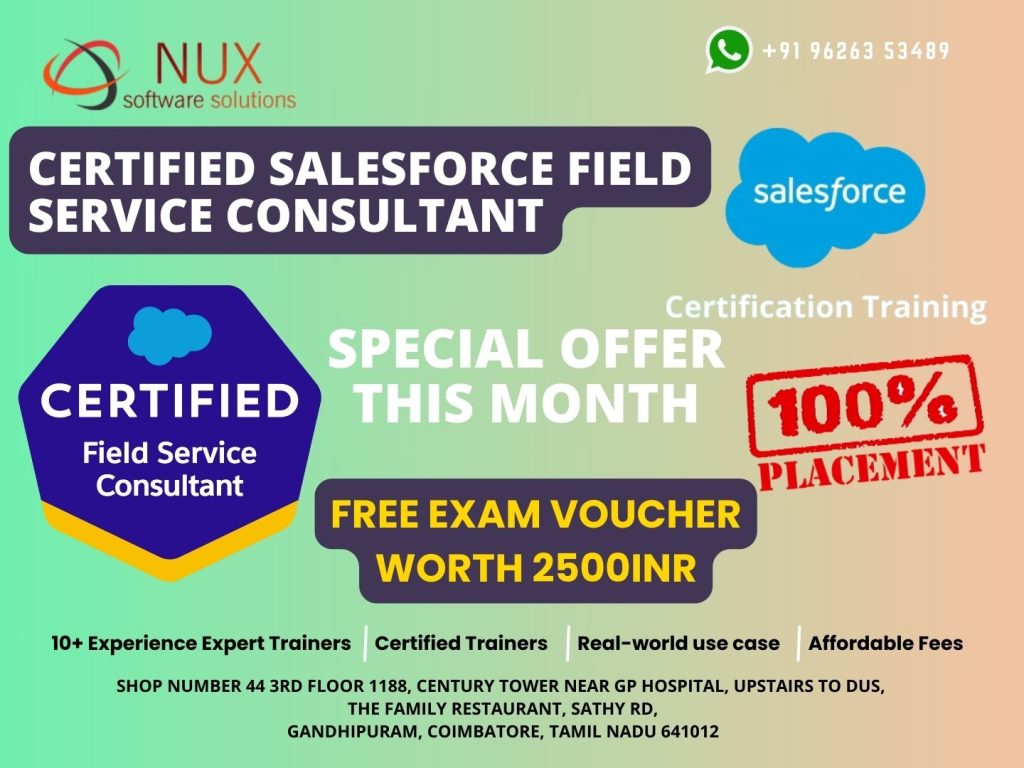Course Summary
The Salesforce Certified Integration Architect credential validates your expertise in designing and implementing integration solutions that are secure, scalable, and maintainable across the Salesforce platform and external enterprise systems. This training focuses on real-world scenarios involving APIs, middleware, data synchronization, event-driven architecture, and system authentication.
This course prepares participants to architect complex integrations across multiple systems while ensuring governance, performance, and data consistency—empowering them to support mission-critical business processes across diverse industries.
Why Choose This Course
Salesforce integrations are at the core of digital ecosystems, and the demand for Integration Architects is soaring. This course helps you:
-
Build mastery in REST/SOAP APIs, Platform Events, and Integration Patterns
-
Prepare thoroughly for the Salesforce Integration Architect certification
-
Learn to solve real-time, batch, and hybrid integration challenges
-
Become a trusted technical leader in enterprise connectivity and system orchestration
-
Future-proof your career with a credential recognized by Salesforce partners and global enterprises
Who Should Enroll
This course is ideal for:
-
Salesforce Technical Architects and Developers working on cross-system solutions
-
Middleware specialists and integration consultants transitioning to Salesforce
-
Enterprise architects and solution designers leading digital transformation
-
Professionals preparing for the Salesforce Certified Integration Architect exam
-
Organizations adopting Salesforce in multi-platform or cloud-native environments
Skills You Will Gain
-
Designing integration strategies using real-time and batch processes
-
Leveraging Salesforce APIs (REST, SOAP, Bulk, Streaming) effectively
-
Handling authentication models like OAuth 2.0, SAML, and JWT
-
Working with external systems, middleware platforms, and data virtualization
-
Applying best practices for governance, error handling, and performance tuning
Career Benefits
After completing this course, you will:
-
Be prepared to pass the Salesforce Integration Architect certification exam
-
Qualify for roles such as Integration Architect, Salesforce Technical Lead, or Enterprise Architect
-
Gain advanced skills in designing robust system architectures for global-scale applications
-
Be equipped to lead integration for Salesforce + ERP, HCM, marketing, and legacy systems
-
Join an elite tier of professionals responsible for connectivity in digital transformation
Connect Everything. Architect for Performance.
In today’s interconnected business world, integration is no longer optional—it’s strategic. This course empowers you to become the architect that enables seamless communication between systems, users, and business processes.
Join the Salesforce Integration Architect training at Linux Training Center, Coimbatore.
Certified salesforce-integration-architect Syllabus
Modules
Evaluate the Current System Landscape: 8%
Given a set of business requirements, identify the current system landscape and determine what standards, limitations, boundaries, and protocols exist.
Given an existing system landscape, analyze for constraints and/or pain-points to satisfy a business requirement(s).
Given a set of requirements, evaluate the authentication and authorization needs based on the system landscape.
Evaluate Business Needs: 11%
Given a use case, identify functional and non-functional requirements needed for integration.
Based on a given integration requirement, identify and classify data into Confidential/Secure/Public.
Given a use case, identify key factors for CRM success that should be included as integration requirements.
Given a use case, identify the business growth and regulatory factors that can impact choice of integration solutions.
Translate Needs to Integration Requirements: 22%
Given an existing system landscape diagram, create an inventory of the systems and integration patterns.
Given a use case and business process, evaluate system and process constraints.
Given a use case, identify integration security/authentication/authorization requirements.
Given a use case, identify performance needs (volumes, response times, latency) and propose appropriate integration solutions that will meet business requirements.
Design Integration Solutions: 28%
Given a use case, identify the integration pattern that meets business requirements.
Given a use case, define the components which create a solution that meets business requirements.
Given a use case, identify the trade-offs, limitations, and constraints that meet the proposed solution.
Given a use case that includes technical requirements, constraints, or drivers, specify the appropriate Salesforce application programming interface(s) (API) for the proposed solution.
Given a use case that includes technical requirements, constraints, or drivers, determine the standards, components, techniques, and security mechanism that should be used.
Build Solution: 23%
Given a use case that includes technical requirements, constraints, or drivers, identify the considerations when designing and implementing an API(s), both Salesforce as an API provider and Salesforce as an API consumer.
Given a use case, identify the considerations when choosing the right option in making an outbound call to an external system.
Given a use case, describe what should be considered when building a scalable solution.
Given a use case, determine error handling for different integration options.
Given a use case, create a security solution for inbound or outbound integrations.
Given a use case, identify the factors needed to build resilience in an integration solution for system updates.
Maintain Integration: 8%
Given an integration maintenance use case, identify performance monitoring needs for integration requirements.
Given a use case, identify the appropriate error handling, escalation, and recovery procedures for a failed integration.
Given a use case, identify reporting needs for integration monitoring.




